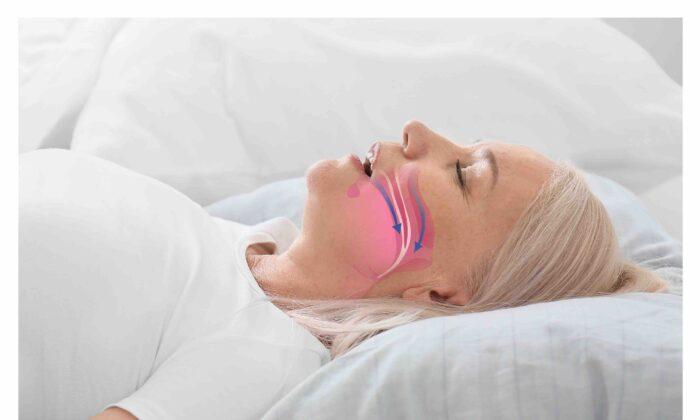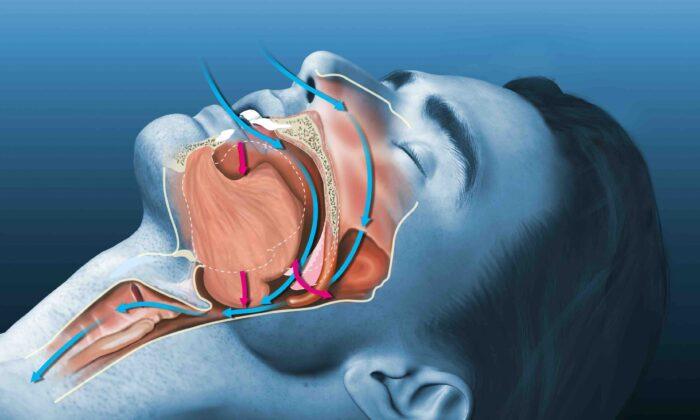A lingering glance in the bathroom mirror may bring you the unsettling realization that your gums are shrinking or red, or that your teeth are longer. What’s going on?
Truth be told, it didn’t happen overnight. The condition may have been quietly developing for years, but now, it’s clearly visible. Someone may have said something about your bad breath, which can also prompt a closer look in the mirror.
We can see the outline of the teeth below the gumline but we can’t see what’s beneath the gums. There, surrounding the tooth as it embeds into the jawbone is the periodontal ligament, which acts like a hammock, allowing the root of the tooth to move in various directions under the force of biting and chewing. This ligament connects the tooth’s outer root surface to the bone surrounding the tooth. The periodontal ligament is a wonderful arrangement that allows this protective movement and helps guide orthodontic movement of the teeth by an orthodontist when necessary. Unfortunately, we can treat this ligament very badly.
Why Do Our Gums Shrink?
The first and most common cause, long before we can see it in the mirror, is from chemical and physical irritation of the gums by the buildup of soft plaque and hard, calcified plaque or calculus.Soft plaque deposits build up rather quickly around the gum margins if not removed by adequate oral hygiene. These deposits, made worse by the modern Western diet, are food for bacteria and other microorganisms that multiply and form intricate competing colonies. Then, minerals such as calcium and phosphorus from the saliva cement them into place, creating calculus. Any growing population of living creatures produces waste products. Where do the waste products go? Well, there’s no sanitary service apart from the protective effects of our saliva. This natural mouthwash can’t by itself remove the physical deposits. To compound the situation, drugs commonly used to treat hypertension, urinary incontinence, depression, allergies, and many other conditions can reduce the amount of saliva we make.
As a result, the toxic waste products from those microorganisms sit there, irritating the gums, which then become red and inflamed. This is called gingivitis. This red and inflamed body tissue will eventually bleed, giving us evidence of a problem when we brush or floss. In time, this inflammation spreads and the teeth lose the periodontal ligament attachment to the bone.
Long before we noticed a problem in the mirror, a space had developed between the gum and tooth. This is called “pocketing.” The tissues attached to the teeth respond to these assaults and move away from the root of the tooth. As a result, we see the root of the tooth appearing above our retreating gumline.
To prevent this from happening, we need to remove all of the sticky food material from the teeth within 24 hours each day. That’s why it’s recommended to brush at least twice a day. The longer this process of plaque and calculus formation continues, the more we lose our gums and bone attachment—and the more root surface appears.
Armed with this knowledge, and with a fresh determination to have healthy gums, some people will vigorously brush the outsides of their teeth back and forth. Alas, this can lead to tooth brush abrasion; that is, although those surfaces of the teeth do become clean in that area, the scrubbing results in the gums being physically pushed away from the teeth. Over time, one creates grooves in the exposed root surfaces as the root surface is softer than the hard enamel over the rest of the tooth, especially if we use abrasive toothpaste.
Systemic health issues can also damage gum tissues, accelerating their loss. Likewise, we now understand that dental health can affect systemic health as well. Oral bacteria can enter the bloodstream and cause havoc for the heart and other organs. And vice versa, uncontrolled diabetes puts people at risk of becoming sick from dental problems. Alzheimer’s disease, as well as rheumatic and respiratory conditions can have links to gum disease as well. Poor oral health leads to inflammation and long-term inflammation creates an overtaxed chronic immune response, making us less able to deal with infections, injury, and illness.
Smoking plays a similar role, and also causes the gums to lose vitality.
As the gums recede, so do the attachments to the periodontal ligament and, thus, to the bone. The teeth will then be standing without any support to hold them in place. As we use our teeth on a daily basis to chew, this back-and-forth wiggling is like pushing a fence post back and forth; we will eventually push it over. Usually, pain from biting with a loose tooth will encourage us to seek dental care before it’s fully loosened.
A process called abfraction can occur on teeth where one sees a loss of tooth structure below the enamel level on the exposed root surfaces. This process can also be the result of grinding the teeth. Teeth grinding, or bruxism, is a destructive, unconscious habit that can wear out the enamel on the chewing surface of the teeth. As one’s occlusion, or closure, of the teeth changes, it can eventually affect the shape and profile of one’s face.
What Can We Do About Gum Shrinkage?
The first and most obvious step is to prevent further damage is by stopping the cause and progression of gum loss. Deposits on the teeth and around the gums need to be removed, typically by a dentist or dental hygienist. Simply cleaning the teeth is both a preventative process and a definitive treatment. Your dentist or hygienist can apply a disclosing agent to your teeth to reveal the less obvious deposits that still exist on the teeth. Then, the biofilm, a microscopic blanket covering the teeth, will become apparent.If our gums are already shrinking, we must address the primary cause. Often, this is because we haven’t been able to clean the plaque-forming deposits that led to gingivitis and tissue loss in the first place.
In a busy life, maybe we simply don’t brush our teeth for long enough, or effectively. We may miss some areas, or fail to clean between the teeth. We may have formed the habit of cleaning some easier to reach areas better than other harder to reach areas. Being either right- or left-handed also will lead to favorite cleaning areas.
Sometimes, it is a matter of technique. We are not trying to scrub teeth, as we are not polishing metal. Rather, we want to regularly remove soft deposits from all the surfaces of the teeth.
Bleeding may occur if the gums are inflamed. This is an early symptom of gingivitis. Any open wound will bleed if stimulated. But if we stop brushing because of this bleeding, it will become worse. With comprehensive, careful, soft brushing, bleeding will reduce quickly after a few days. We need to be brushing on the gum areas as well, not just the top part of the tooth. Although not essential, an electric toothbrush can be more efficient than a standard brush, with many new modern examples now available.
For those with less manual dexterity, an electric brush is really beneficial.
Don’t use a hard brush as that will exacerbate the recession, especially in conjunction with scrubbing.
Pocketing will still persist even after careful brushing, so cleaning between the teeth is also essential. There are great products such as water flossers and special toothbrushes that can help us do this this efficiently.
However, if hard plaque or calculus is present on the teeth, this hard substance won’t be removed by a home regime. These deposits need to be removed by a dentist or hygienist as this calculus is like cement attached to the teeth.
How to Address Sensitive Teeth
A number of brands of toothpaste are formulated especially for sensitive teeth and their regular use can also be effective.Restorations (fillings) may need to be applied to the exposed, unsightly root surfaces. With modern materials, the exposed surfaces can be covered without drilling by using adhesive or bonding techniques.
The recessed areas of the root are more vulnerable to decay. If decay has occurred, it needs to be removed but can still be restored. The decay is usually a dark brown or black color, depending on your diet. All these restorations use adhesive techniques and materials that can be very esthetic, blending in with the surrounding surfaces of the teeth.
So now, there is no decay and the gums are clean and healthy but the teeth are still too long. Unfortunately, the gums won’t grow back up again to cover the exposed root surface of the teeth, and spaces are evident between the teeth. We have visible gum shrinkage!
What can be done?
One method uses a piece of skin tissue, or gum graft, usually from the roof of the mouth or palate. This can be harvested and stitched into place to cover the missing gum section. This is often done by a dental specialist called a periodontist, but can be done by a trained dentist as well. This is a well-established procedure and the results can be very effective.
Another method used to restore gum tissue is to apply relatively standard white dental filling material to both the surface of the root and tooth to close the space. Modern adhesive materials enable white composite fillings to be placed in this way to any part of the teeth. Dental composite fillings can be fashioned into any shape, as long as there is a surface for it to adhere to. The results can look quite good.





